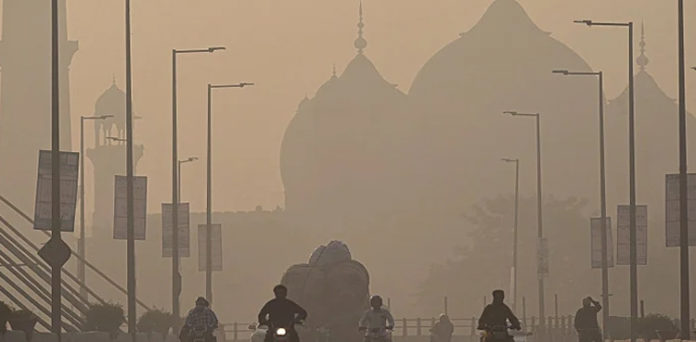LAHORE: The air pollution crisis continues in Punjab, with Lahore topping the list of the world’s most polluted cities, registering an Air Quality Index (AQI) reading of over 700, ARY News reported on Saturday.
Despite the authorities’ efforts to tackle smog, Lahore and several other cities in Punjab remain plagued by hazardous air quality. Multan, with an AQI of 1659, has become the most polluted city in Pakistan, with dangerously high levels of pollutants.
Due to poor visibility caused by thick fog, sections of the Lahore-Islamabad and Lahore-Sialkot motorways have been closed for traffic.
In response to the worsening pollution, the Punjab government announced the closure of schools up to higher secondary level in smog-hit districts until November 17. The affected districts include Lahore, Sheikhupura, Kasur, Nankana Sahib, Gujranwala, Gujrat, Hafizabad, Mandi Bahauddin, Sialkot, Narowal, Faisalabad, Chiniot, Jhang, Toba Tek Singh, Multan, Lodhran, Vehari, and Khanewal.
The government’s decision comes as the region grapples with severe air pollution levels that have soared to alarming heights, posing a significant health risk, especially to children.
Lahore has consistently ranked as one of the world’s most polluted cities, prompting urgent measures from local authorities.
Senior provincial minister Marriyum Aurangzeb stated that winds from India are contributing to the increased smog levels in Lahore. “This issue cannot be resolved without discussing it with India,” she said. Environment Protection Agency Secretary Jahangir Anwar also confirmed that the polluted air from the east is heading toward Lahore, significantly boosting the AQI readings.
Earlier, a senior environmental protection official mentioned that Lahore’s AQI had never reached such levels before, noting that PM2.5 pollutant levels had peaked at 1,067 — 80 times higher than the World Health Organization’s acceptable levels.
For days, Lahore has been enveloped in smog, caused by a combination of fog, low-grade diesel fumes, smoke from seasonal agricultural burning, and cooling temperatures.
The hazardous PM2.5 particulate matter, which causes severe health issues, remains a major concern, with levels far exceeding the World Health Organization’s standards for healthy air.
ARY NEWS, DAWN NEWS, GEO NEWS, EXPRESS NEWS, NOON NEWS





